CurveBilled Thrasher National Geographic
Curve-billed Thrasher: English (United States) Curve-billed Thrasher: French: Moqueur à bec courbe: French (France) Moqueur à bec courbe: German: Krummschnabel-Spottdrossel: Icelandic: Bogþrasi: Japanese:
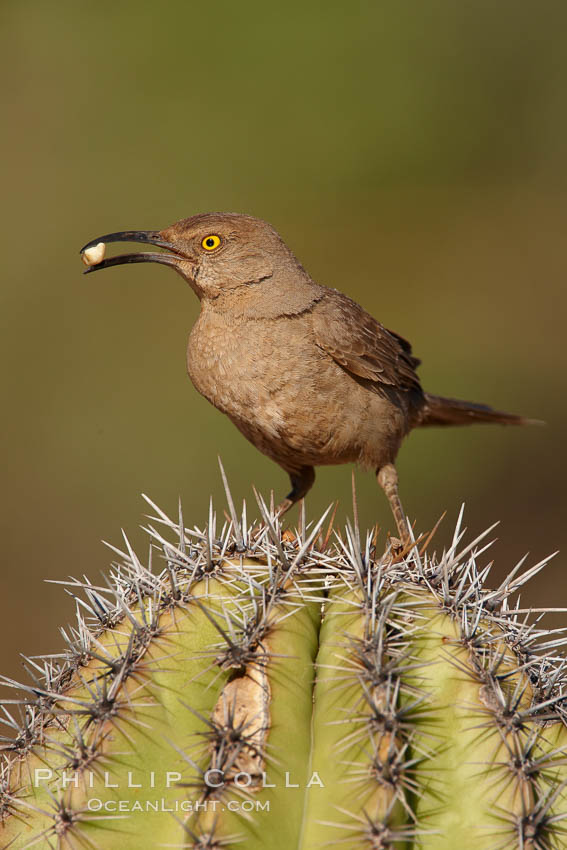
Curvebilled thrasher, Toxostoma curvirostre photo, Amado, Arizona
Strong legs and a long, decurved bill give Curve-billed Thrashers the perfect tools for hunting insects in the punishing deserts, canyons, and brushlands that are its home. That long bill also keeps long-legged insect prey at a safe distance and comes in handy for foraging and nesting among spiny plants, especially cacti.
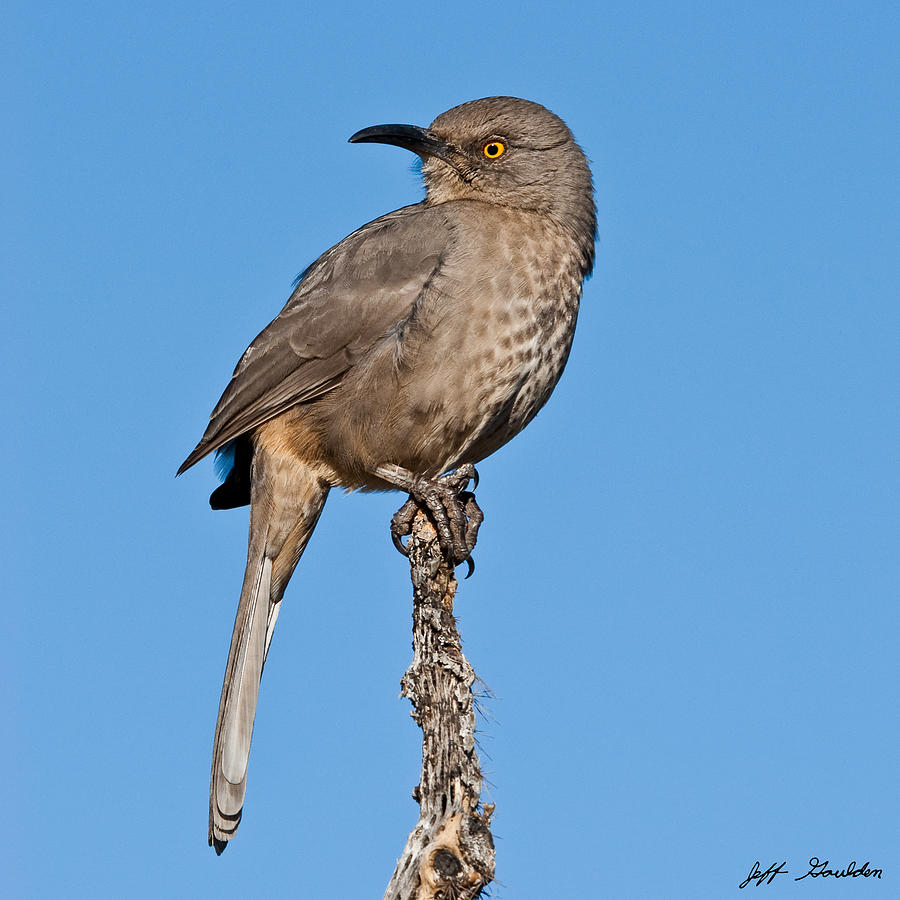
Curvebilled Thrasher Photograph by Jeff Goulden
Curve-billed Thrasher Toxostoma curvirostre Of the various thrashers in the southwestern deserts, the Curve-bill is the most familiar and most often seen. It makes itself more conspicuous than the rest, dashing about in the open, calling a loud whit-wheet! from the tops of mesquites.

Curvebilled Thrasher Bird Watching Academy
The curve-billed thrasher ( Toxostoma curvirostre) is a medium-sized mimid native to most of Mexico and to the deserts of southwestern United States. It is a non-migratory species, and throughout most of its range it is the most common desert thrasher. [2]

Curvebilled Thrasher FeederWatch
As their name suggests, they have characteristically decurved bills. Interestingly, their bills are not the most curved out of all the members of the Thrasher family. W.n Swainson, the naturalist who first published information about the species, coined their name before the existence of other Thrashers with curved bills were popularly known.

Curved Billed Thrasher Bird photo, My best friend, My photos
About the Curve-Billed Thrasher The Curve-billed Thrasher is native to the southwestern United States and New Mexico and is a part of the Mimidae family of birds, which includes other species such as mockingbirds and catbirds. Their menacing, black bill is used to search for insects and seeds, fruits, berries, and cactus flowers.

Curvebilled Thrasher eBird
The curve-billed thrasher ( Toxostoma curvirostre ) is a medium-sized mimid native to most of Mexico and to the deserts of southwestern United States. It is a non-migratory species, and throughout most of its range it is the most common desert thrasher. Several subspecies have been classified since 1827, though there is no consensus on the number.
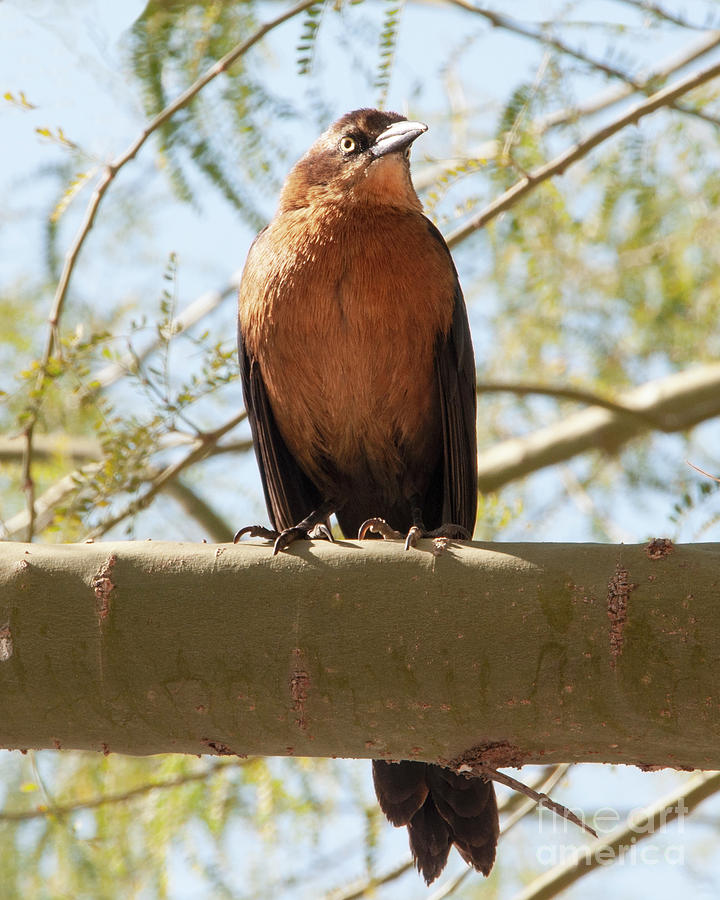
Curve Billed Thrasher in Palo Verde Tree Photograph by Jackie Follett
The Curve-billed Thrasher's bill is long and strong to help it probe the soil for food.Despite having strong legs, it does not scratch the ground like a towhee. Curve-billed Thrasher pairs maintain permanent territories. Curve-billed Thrashers nest relatively early in the year, mostly from February through May, probably to beat the hot, dry summer weather of the southwestern U.S.
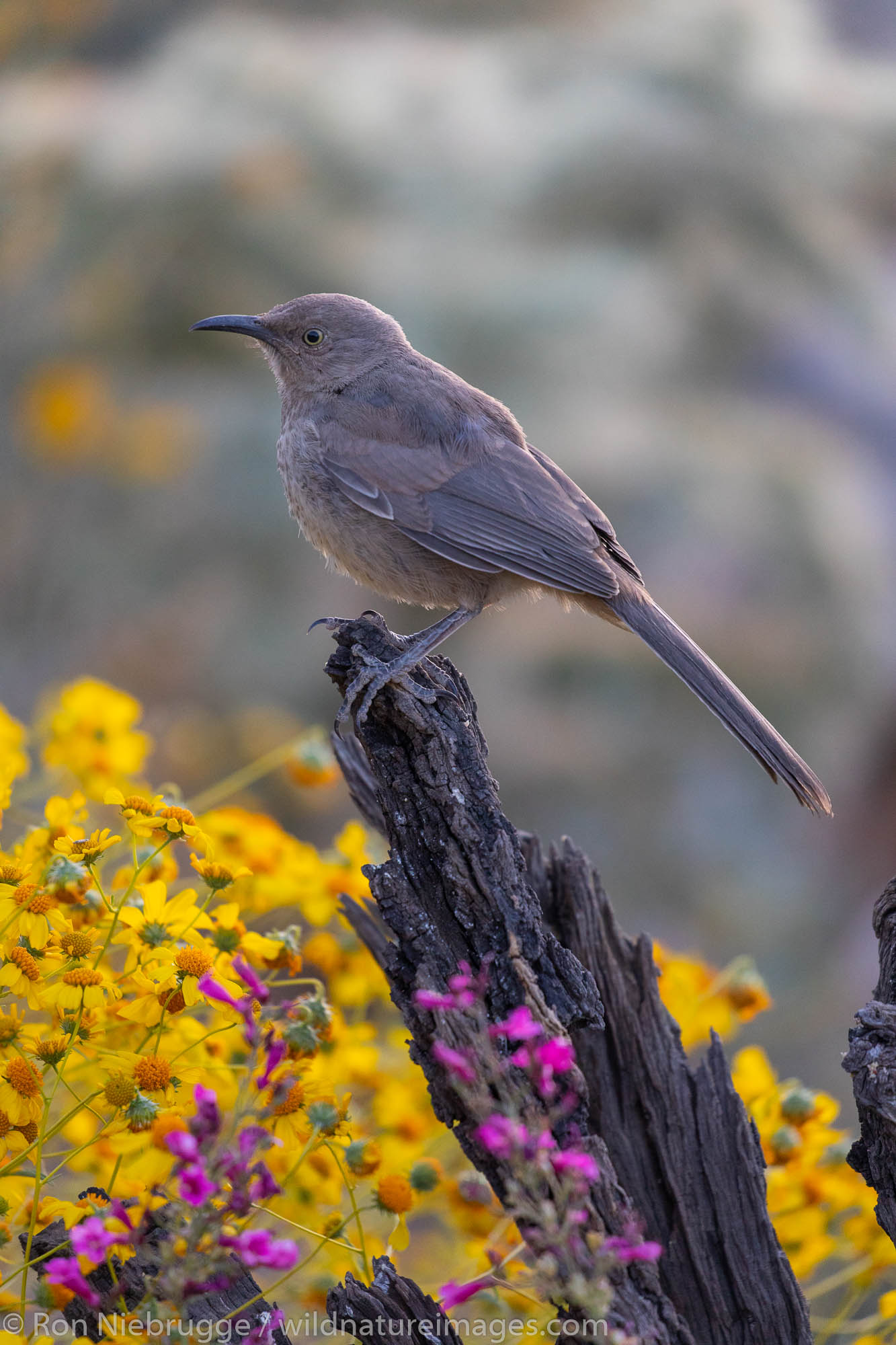
Curvebilled Thrasher Tucson, Arizona. Photos by Ron Niebrugge
Distribution and contact zone: Range of two populations of Curve-billed Thrasher. Sonoran population shown in red, Chihuahuan in blue, and area of intergradation in green. Red markers show vagrant records of Sonoran. Records north and east of mapped range (not shown; to Manitoba, Minnesota, Wisconsin, etc.) may be all Chihuahuan.
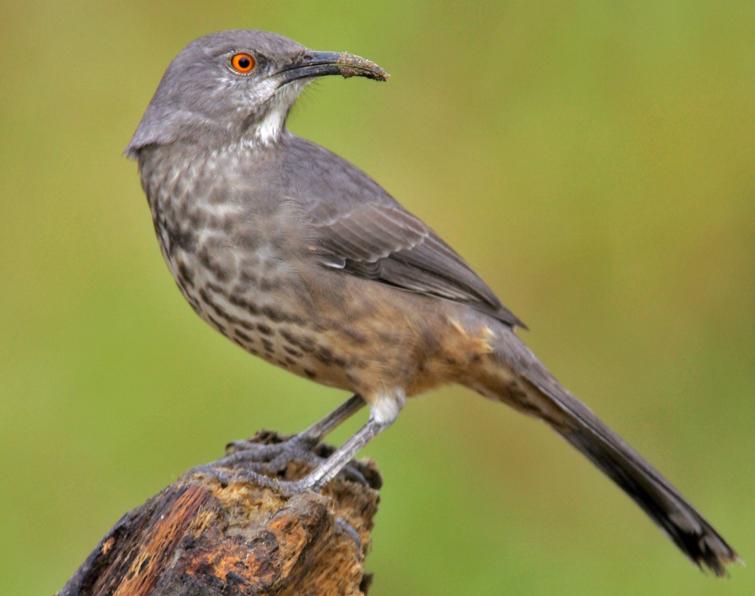
Curvebilled Thrasher Songs and Calls Larkwire
Curve-billed Thrasher - eBird Long-tailed with decurved bill and fairly faint round spots on breast and belly. Grayish-brown overall with paler throat and orangey undertail. Eye color varies from yellow to orange. Lurks around cactus and desert shrubs. Most common thrasher in suburban yards and parks in the southwest U.S. and Mexico.

Pictures and information on Curvebilled Thrasher
The curve-billed thrasher, which forages on the ground beneath shrubs and cacti, is about a foot in length and generally grayish brown in color. It has robust legs, feet and bill - typical of ground-foraging birds - which it uses to shuffle through plant litter and dig into the soil in its search for seeds and insects.
.jpg)
NW Bird Blog Curvebilled Thrasher
Curve-billed Thrasher Toxostoma curvirostre Length: 11 in. (28 cm ) A common garden bird in desert cities and suburbs, this thrasher also inhabits remote and dry desert areas. It tosses leaves and dry vegetation on the ground far to the side with its long, sickle-shaped bill and uncovers the spiders, snails, insects it likes to eat.

Curve Billed Thrasher3519 Thrasher, Bird photo, Great hobbies
Strong legs and a long, decurved bill give Curve-billed Thrashers the perfect tools for hunting insects in the punishing deserts, canyons, and brushlands that are its home. That long bill also keeps long-legged insect prey at a safe distance and comes in handy for foraging and nesting among spiny plants, especially cacti.

Pictures and information on Curvebilled Thrasher
Strong legs and a long, decurved bill give Curve-billed Thrashers the perfect tools for hunting insects in the punishing deserts, canyons, and brushlands that are its home. That long bill also keeps long-legged insect prey at a safe distance and comes in handy for foraging and nesting among spiny plants, especially cacti.

Walking Arizona Curvebilled Thrasher
Curve-Billed Thrasher Scientific Name: Toxostoma curvirostre Type: Birds Size: Length: 11 inches IUCN Red List Status: ? Least concern LC NT VU EN CR EW EX Least Concern Extinct Current.
Feather Tailed Stories Curvebilled Thrasher
Strong legs and a long, decurved bill give Curve-billed Thrashers the perfect tools for hunting insects in the punishing deserts, canyons, and brushlands that are its home. That long bill also keeps long-legged insect prey at a safe distance and comes in handy for foraging and nesting among spiny plants, especially cacti.